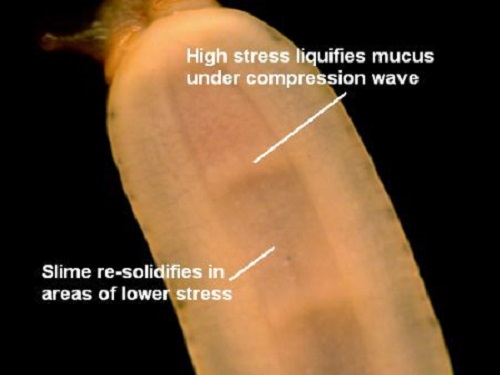Snails and slugs can traverse vertical and inverted terrain because they crawl on a slimy gel which is a complex fluid with non-Newtonian properties. In the most basic terms, the slime acts like a solid glue at rest, but liquifies when an adequate stress is applied (a stress exceeding the apparent yield stress). When the stress is removed, the slime quickly re-solidifies. By exploiting this yield-heal property, a snail can keep part of its foot stuck to the wall, while other parts move forward. The picture below shows the bottom of a Leopard Slug, Limax maximus, during locomotion.

Figure: A moving Leopard slug, viewed from below.
Videos
 |
Video A: Experimental setup for PIV study. (by Randy Ewoldt) |
 |
Video B: Studying the mucus using Particle Image Velocimetry (PIV). (by Randy Ewoldt) |
 |
Video C: Waves in the mucus when the slug moves. (by Brian Chan) |
